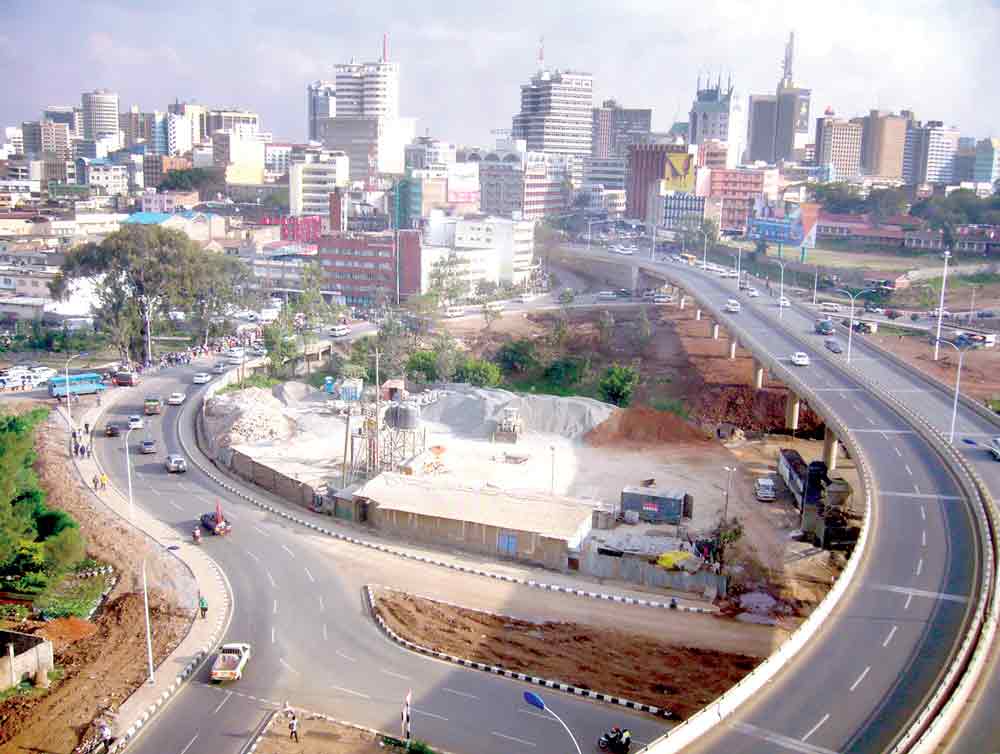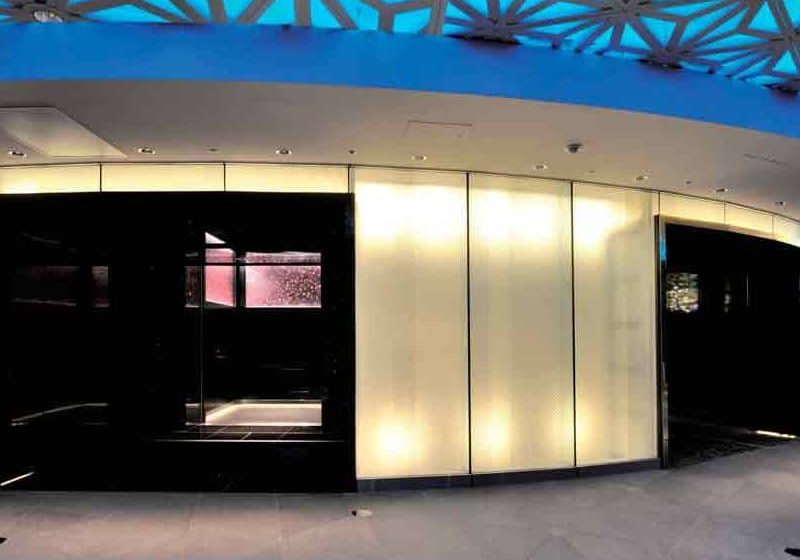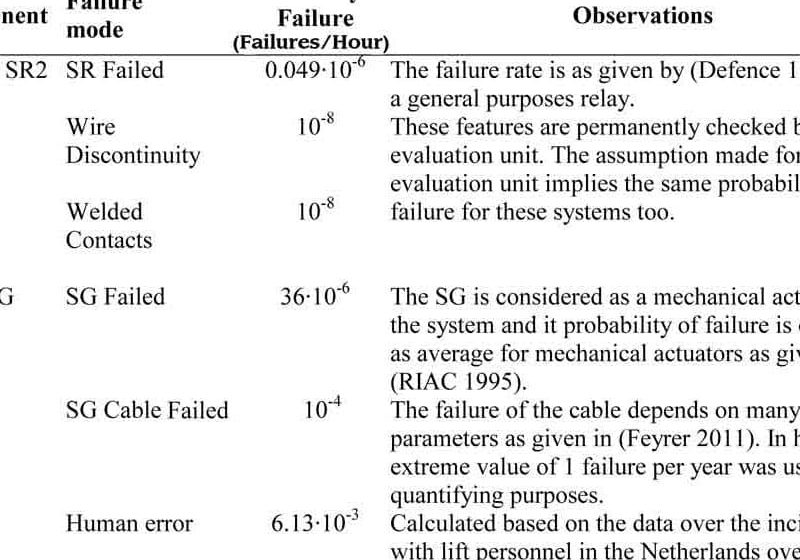Africa: A Growing Continent
Mar 1, 2013

The continent showed signs of economic growth in 2012, and recovery is expected to continue throughout this year.
Overview
Africa is the second-largest continent, after Asia, and second-most-populous continent, with one billion people. The region covers an average total surface area of 30.2 million km2, 6% of that of the world. The economies of the 54 countries in the continent are driven by a rich legacy of natural resources — particularly, minerals, crude oil and natural gas. The continent produces gold, cobalt, platinum, chromium, tantalum, manganese, uranium, diamonds and bauxite. South Africa and Ghana produce an estimated 290 mT of gold, while Guinea is one of the world’s top bauxite producers, at an estimated 17.4 million mT.[1] Congo, with 14 million carats of diamond, is the second-largest global producer of the commodity. South Africa and Gabon are the third- and fourth-leading producers of manganese, after China and Australia, respectively. Algeria tops the world in natural-gas production, with an estimated 4.52 trillion m3.
Despite the continent’s huge natural resource base, according to U.K.’s Department for International Development, it still lags in several key economic indicators.[2] For example, its Sub-Saharan region has 388 million people (51% of the continent’s population) living below the poverty line. The agency shows that some 32 million children (45% of the worldwide total) of primary-school age in the region are out of school. At least two-thirds of all HIV-positive adults and nine in every 10 HIV-positive children live in Sub-Saharan Africa, while an estimated 300 million people (40% of the total population) lack access to safe drinking water.
These grim statistics and a slight economic drop in 2011 notwithstanding, Africa’s economic growth showed signs of recovery in 2012 projected to continue throughout this year at a rate of 4.5%. The African Development Bank (AfDB) shows a decline in the continent’s average growth, from 5% in 2010 to 3.4% in 2011, a fall attributed to the impact of the Arab Spring in North Africa. The region’s growth rate was a mere 0.5% in 2011.[3] AfDB says the slowdown in the Eurozone is likely to reduce demand for African products, and lower foreign direct investments and remittances by Africans in the Diaspora. The bank also predicts poor weather conditions, civil strife (particularly in Congo and Mali) and political uncertainty in many nations remain major risks that could reduce gross domestic product (GDP) growth and threaten food security.
A more optimistic picture has been painted by the World Bank, which says Africa’s economic achievements in 2011 were backed by high commodity prices and strong export growth, especially in countries that have made mineral discoveries in recent years.[4] Makhtar Diop, the bank’s vice-president for Africa, projected that in 2012-2013, one-third of the countries in Africa would grow at or above 6%, “with some of the fastest-growing ones buoyed by new mineral exports and factors such as the return to peace in Côte d’Ivoire, as well as strong growth in countries such as Ethiopia.” He says there is strong investor interest in the region, with foreign direct investment flows that were expected to reach US$31 billion in 2012.
An upsurge in a middle-class population, especially in the continent’s urban areas, has fueled demand for housing, energy, water and transport infrastructure. Although its largest population lives in rural areas, at least 413 million people reside in urban areas, according to business market analyst Frost & Sullivan.[5] This is roughly 40% of the continent’s total population, which could rise to 1.2 billion by 2050. An expanding urban population is expected to fuel demand in the manufacturing sector, which is still low compared to that of sectors such as mining, oil, gas and infrastructure development. In 2011, manufactured goods contributed 14% of the total exports from Africa.[6]
In South Africa, Sub-Saharan Africa’s biggest economy, manufacturing, which had been on the decline since 2009, contributed 15% to the total economy in 2011. The sector faces challenges of rigid labor laws, a shortage of skills, inadequate energy supplies, political uncertainties and low production. Expansion of the exploration and production of oil and gas market is expected to continue for southern Africa, underpinned by “exploration initiatives within Angola.”[7]
Exploration and production of gas and oil has been expected to remain a key driver in Africa’s growth for 2013. Growth of oil and gas marketing and infrastructure development in southern Africa, will be driven by “growth in demand for oil products in South Africa.”[7] Like many other economic sectors, this segment has been hard hit by inadequate and poor infrastructure, which, together with regulatory processes, “are major restraints for the efficient and economical transportation of refined products to the market.”[7]
Growth is also expected in export volumes. China, the highest consumer of commodities from Africa, saw its import bill for the continent reach US$52.5 billion in the first quarter of 2012, compared to US$46.3 billion for the same period the previous year. Top import markets for China include South Africa, Egypt, Nigeria, Algeria and Liberia. Trade between Africa and China is also expected to grow further from the US$160 billion realized in 2011, up 28% from 2010’s figures. Furthermore, IHS Global Insight is of the view that Africa has several options in ensuring the projected growth is achieved, such as enhancing efficiency, widening business opportunities, and improving infrastructure and institutional competences.[8]
More economic growth opportunities are being created through expanding and strengthening regional trading blocs, such as the East African Community (EAC), Southern African Development Community, Common Market for Eastern and Southern Africa and Economic Community of West African States. AfDB argues regional economic integration will expand the regional markets, and efficiency and productivity through competition. The bank has joined in campaigns to encourage the removal of barriers to the movement of goods, services, labor and capital within the regional blocs to encourage growth.
Construction remains the main driver of the continent’s economic growth. Despite the global financial crisis that impacted international lending, expenditure by contractors operating in the region and the recent political turmoil in North Africa, the region’s construction industry has shown resilience and promise to expand, providing opportunities for the growth of such sectors as the vertical-transportation industry.
North Africa
North Africa’s Morocco, Algeria, Tunisia, Libya and Egypt, with a combined population of about 170 million people, generate about US$700 billion, almost one-third of Africa’s total GDP. Upheaval in Libya caused a global economic concern after oil production was shut down, as the civil war that toppled Muammar Gaddafi raged. The country’s GDP fell by 40%.[11] The Arab Spring in Egypt, Tunisa and Libya is likely to constrain spending in the construction industry for some time, “Although,” as construction consultancy Davis Langdon wrote in March 2012, “there are expected to be significant opportunities going forward.”[9]
Infrastructure reconstruction, especially in Egypt and Libya, is seen as a key stimulus in the economic recovery and growth of North Africa. Dark clouds still hang over these countries’ economic recovery, but the rest of Africa promises to cover for the growth constraints in North Africa. Instability in 2010 triggered a fall in GDP growth of 3.6%, to near stagnation, in 2011.[10] Egypt’s growth dropped by 3.3%, to below 2%, in 2011, while neighboring Tunisa’s growth fell by 4.2%, to negative growth of around 1%, with analysts predicting gradual growth for both countries in 2012 and 2013.
Africa Economic Outlook says the Arab Spring in North Africa led to a decline in investments by 42% in 2011 to US$9.48 billion, though long-term economic fundamentals remain strong. Morocco, a leading global tourist destination, escaped unscathed as the Arab Spring engulfed Egypt and Tunisia. Its economy grew by 4.6% in 2011 and is expected to remain steady at 4.8% in 2013. North Africa’s fiscal deficit is likely to widen to its state before the 2009 global financial crisis as the impact of the 2010/2011 political uprisings take effect. Egypt and Tunisia, the worst hit by the upheavals, realized a decline in revenue collection and spiraling expenditure budgets on social benefits and wages for public-sector workers. Egypt anticipates a 15.6% budget deficit, to US$27.8 billion in the 2012/2013 fiscal year, while in recovering Tunisia, the budget deficit is expected to be 6.6% of the GDP. The total budget is to rise modestly, from the current US$16.2 billion to US$16.8 billion.
Libya, which had 47.1 billion barrels of proven oil reserves as of January 2012 (the largest in Africa), posted its first deficit in many years in 2011, at 17%, compared to a surplus of 9% in 2010. Production of oil, which accounts for 95% of the country’s export earnings, 75% of government receipts and 25% of the country’s GDP, was undermined by the revolution and subsequent insecurity.[12] However, with resumption of oil production, which stood at 1.6 million barrels per day before the war, Libya’s revenues were expected to grow in 2012 and put the country in surplus again in 2013.
West Africa
West Africa, though rich in oil and minerals, was heavily impacted by the civil war in Cote d’Ivoire and ravaging drought in seven countries in 2010 and part of 2011, with spillover effects likely to be felt through 2013. Although the Cote d’Ivoire conflict ended in mid 2011, it reduced the country’s GDP by 4.7%. However, the International Monetary Fund (IMF) believes growth will make a strong comeback (at 8%) in 2012-2013.[19] Cote d’Ivoire, which contributes more than 30% of the West African economy, is the world’s leading producer of cocoa, contributing over 40% of total global output, and is also Africa’s leading producer of Robusta coffee and palm oil.
The crippling drought in Burkina Faso, Mali, Senegal, Niger, Chad, Gambia and Mauritania will have a general impact on their growth and that of the rest of the region, as governments brace for high food prices and escalating deficits in the short term. The IMF believes West African economies will make a strong show in 2012-2013 at an average of 6.5%, up from 1% in 2010 and early 2011.[19]
South Africa
South Africa, the region’s largest economy with a GDP of US$364 billion, equivalent to one-third of Sub-Sahara’s total GDP, saw its growth stuck at an average of 3.2% in 2011. Export value dropped to US$67.93 billion in 2009, from US$86.12 billion in 2008, as the global financial crisis intensified and a resolution of the Eurozone fiscal and financial crisis remained elusive. Private investments fell with the onset of mining-sector strikes in 2011-2012. Growth in 2012, the IMF says, will be around 2.5%-3% but could rise to 3.5%-4% in 2013.[19]
Market analyst Business Monitor International (BMI) believed the country’s real growth in the construction industry would be around 2.5% in 2012. This forecast was supported by the government’s ambitious infrastructure spending plan of US$100 billion. However, South Africa’s construction industry faces several hiccups, such as policy uncertainty, excessive bureaucracy and credit-rating pressure, which BMI says has left many investors in the sector with “limited growth at home, and, as a result, many are now trying their luck elsewhere in the region.”[13] A modest 0.9% growth was recorded in investments in residential, nonresidential and civil construction works in South Africa for the last quarter of 2011.[14] Government and private investment for the quarter rose to US$19.7 billion, up from US$19.5 billion in the last quarter of 2010.
In neighboring Namibia and Botswana, recovery in external demand for mineral producers pushed the two nations’ GDP growth to 6.5% and 7%, respectively, in 2011. However, unresolved external challenges threatened the rising growth for 2012, projected at 3-4%.
East Africa
East Africa has 26% of the continent’s total population and occupies an estimated 22% of Africa’s total landmass. The region also contributes 26% of the continent’s combined GDP. Kenya, Tanzania, Uganda, Rwanda and Burundi subscribe to the EAC economic union. The countries’ combined average growth was 5.9% in 2011, according to KPMG East Africa Ltd. The agency says all the countries in the region, except Uganda and Burundi, experienced decline in growth in 2011, compared to that of 2010.[15]
The EAC grappled with rising inflation on basic food commodities and price increases on essential imports such as oil. However, PricewaterhouseCoopers LLP (PWC) found that unfavorable weather conditions, and high import and raw-materials costs affected agricultural production, electricity generation and manufacturing, erasing some of the economic gains.[16]
Kenya, the region’s largest economy, had real GDP growth of 4.4% in 2010, which rose to 5.8% in 2011. The growth was projected to expand to 5.2% in 2012-2013 on the back of strengthened financial systems, legal institutional reforms and scaling up of infrastructure investment.
Tanzania’s GDP grew by 6.4% in 2011, compared to 7% in 2010, as the poor weather conditions triggered decline in hydroelectricity generation and the country grappled with a high importation bill for raw materials. PWC predicts the economy will grow by 6.8% in 2012 if plans to increase expenditure on infrastructure, access to financial services and strengthening of public/private partnerships are successfully pushed through.
The region’s fastest-growing economy, Rwanda, posted an 8.6% growth in 2011, up from the previous year’s 7.2%. The growth was hinged on an average 18% growth in subsectors of construction, minerals, chemicals, and nonmetallic minerals. PWC projects 7.7% growth in 2012, as Rwanda moves to expand urbanization and employment.
Conclusion
The anticipated growth of Africa’s economy is expected to expand the region’s urban population, currently estimated at 11%. Its economic growth (except for that of South Africa) has been credited for the expansion of the building and construction industry. This growth will have a direct bearing on the elevator/escalator sector. The South African construction industry’s year-over-year growth in value stood at 15.54% in 2007-2011. According to Market Publishers, that figure will drop to 9.61% over the 2012-2016 period in response to the continuing Eurozone crisis, which has weakened the global investment mood.[17]
Little progress is expected for Africa’s current low per-capita income. Otis President Pedro Baranda says the continent is not likely “to show much promise for a decade or so”[18] in the elevator/escalator business, but others in the sector have stated its best days for the country (region) are yet to come.[20] These statements are made while keeping in mind that Africa is a region with good growth prospects “driven by strong nonresidential construction activity and rising incomes.”[21]
The booming mining sector in Southern Africa, new oil discoveries in West and East Africa, and the ramping up of gas production in East and North Africa have raised hopes of putting the continent on a construction path for the coming months.[22] Proceeds from this expanding sector will boost the commercial and residential construction in the region’s urban and peri-urban areas.[23] The trend is expected to create opportunity for the vertical-transportation industry.
References
[1] “Mineral Commodity Summaries 2011,” U.S. Department of the Interior Geological Survey (miner-als.usgs.gov/minerals/pubs/mcs/2011/mcs2011.pdf).
[2] “World Statistics Day 2010,” Department for International Development (www.dfid.gov.uk/stories/features/2010/world-statistics-day-2010).
[3] “Africa Economic Outlook,” African Development Bank (www.afdb.org/en/knowledge/publications/african-economic-outlook).
[4] “Despite Global Slowdown, African Economies Growing,” World Bank (www.worldbank.org).
[5] “Investment Opportunities for Growth in Africa,” Frost & Sullivan (www.frost.com/prod/servlet/market-insight-print.pag?docid).
[6] “Manufacturing: Can Africa Become the Next China?” How We Made it in Africa (www.howwemadeitinafrica.com/manufacturing-can-africa-become-the-next-china/9959).
[7] “Stimulated Economic Growth Spurs the Demand for Oil and Gas in Southern Africa,” Frost & Sullivan (www.frost.com/prod/servlet/press-release.pag?docid=207884073).
[8] “AfDB Readies Ambitious Infrastructure Bond Programme to Boost African Economies,” IHS Global Insight (www.ihs.com/products/global-insight/industry-economic-report.aspx?id=1065970698).
[9] “World Construction 2012,” Davis Langdon (www.davislangdon.com/upload/WorldConstructionReport_2012.pdf).
[10] “African Economic Outlook 2012: North African Countries,” African Economic Outlook (www.africaneconomicoutlook.org/fileadmin/uploads/aeo/PDF/Regional_Edition/AEO%20North%20Africa%20Outlook%20EN.pdf).
[11] “Egypt Plans New Deficit-Reduction Steps,” Reuters (www.reuters.com/article/2012/11/11/us-egypt-austerity-idUSBRE8AA07220121111).
[12] “Country Analysis Briefs: Libya,” U.S. Energy Information Administration (www.eia.gov/cabs/libya/pdf.pdf).
[13] “State of the South African Construction Industry,” IndustryInsight (industryinsight.co.za/reports/industry_insight_2nd_quarter_2012.pdf).
[14] “South Africa Real Estate Report Q4 2012,” Business Monitor International (www.marketresearch.com/Business-Monitor-International-v304/South-Africa-Real-Estate-Q4-7123199).
[15] “KPMG East Africa Budget Analysis 2012,” KPMG East Africa Ltd. (www.kpmg.com/eastafrica/en/IssuesAndInsights/ArticlesPublications/Pages/KPMG_East_Africa_Budget_Analysis_2012.aspx).
[16] “East Africa Economies at a Glance,” PricewaterhouseCoopers LLP (www.pwc.com/en_KE/ke/pdf/kenya-budget-2012-east-african-community.pdf).
[17] “Construction in South Africa — Key Trends and Opportunities to 2016,” Market Publishers Ltd. (marketpublish-ers.com/report/industry/construction/construction_in_south_africa_key_trends_n_opportunities_to_2016.html).
[18] “Elevator Maker Worries Riders Need More to Do,” MSNBC (www.msnbc.msn.com/id/47076245/ns/business-us_business/t/elevator-maker-worries-riders-need-more-do).
[19] “IMF Outlook for Sub-Saharan Africa: Recovery and New Risks,” International Monetary Fund (www.imf.org/external/np/sec/pr/2011/pr11155.htm).
[20] “ThyssenKrupp Elevator: Elevating to a higher standard,” The African Business Journal (www.tabj.co.za/africa_in_action/november10_aia/thyssenkrupp_elevator.html).
[21] “World Elevators Market: Global demand to increase 4% annually through 2013,” ReportLinker (www.reportlinker.com/p0138504/World-Elevators-Market.html).
[22] “Africa Oil and Gas: A Continent on the Move,” Ernest & Young (www.ey.com/Publication/vwLUAssets/Africa_oil_and_gas_a_continent_on_the_move_pdf/$FILE/Africa_oil_and_gas_continent_on_the_move.pdf).
[23] “The State of African Cities; Population of African Cities to Triple,” UN HABITAT (www.unhabitat.org/documents/SOAC10/SOAC-PR1-en.pdf).
Get more of Elevator World. Sign up for our free e-newsletter.









